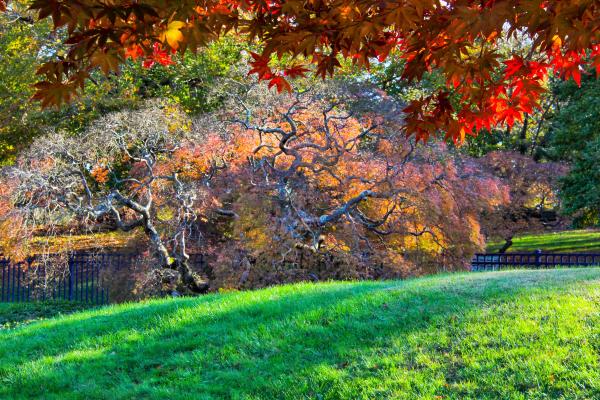Advanced Search
Looking east, West Philadelphia’s Bryant School. West End School opened here at the northwest corner of 61st St. and Cedar Ave. in 1903, supplemental to an older school building next to the site. Archival photos suggest that the two buildings were joined in 1913, the year the school was enlarged and renamed William Cullen Bryant School. The school today is part of the Cobb’s Creek neighborhood.
This aerial photo shows Hestonville between Master St. and Lancaster Ave., today a densely packed residential neighborhood.
These brick houses, on the 3600 block of Spring Garden St., the southern boundary of Mantua, were built between 1892 and 1911.

This map drawn from 1930 U.S. Census data shows the strong Jewish presence in West and East Parkside at the beginning of the Great Depression.
Victorian-era houses line Parkside Ave. in the East Parkside neighborhood. The view is south from the grounds of Memorial Hall.

The Shofuso Japanese House and Garden is situated on a lagoon that was a feature of the Centennial Exposition’s topography. The site is below Landsdowne Dr., east of Belmont Ave.

Installed for the Centennial Exposition, this statue of the great German poet, scientist, and statesman Johann Wolfgang von Goethe (1749–1832) stands on the edge of a wooded area east of Belmont Avenue, near the former site of Agricultural Hall.
George’s Hill, whose observation platform provided fairgoers and artists unparalleled views of the Centennial Exposition’s buildings and grounds, is today home to the Mann Center for Performing Arts. The view is east, toward the Total Abstinence Fountain and the Avenue of the Republic (center). The dome of Memorial Hall is visible in the background (left). The towers of City Center rise in the far background.

First installed in 1908 by the Dentzel Carousel Company, this beloved carousel operated for 47 years in West Fairmount Park’s Woodside Amusement Park. Today the restored carousel is a popular attraction of the Please Touch Museum, in Memorial Hall.

Since 2005, Memorial Hall has been home to the Please Touch Museum, Philadelphia’s main attraction for children. The museum operates on two floors of the building. This photo shows the entrance to the Alice in Wonderland Adventures exhibit.

A few interior details from the 1876 version can still be seen in the entry hall of today’s building.
